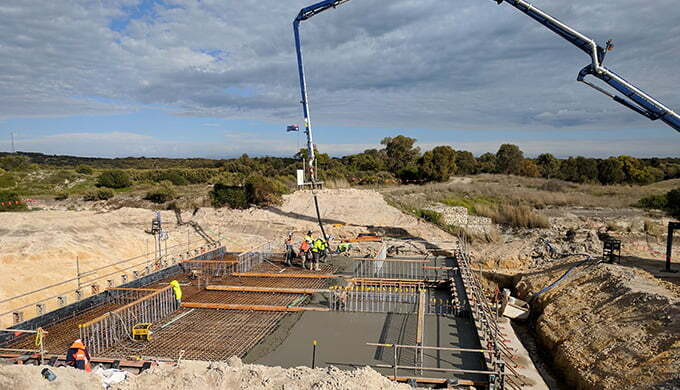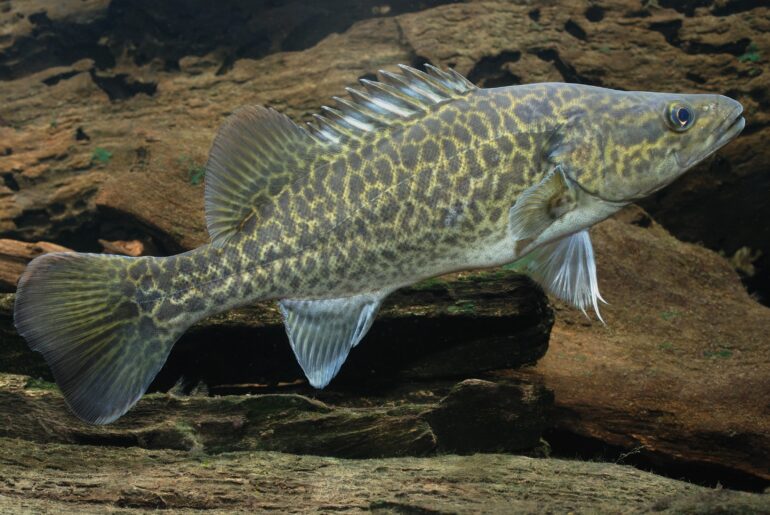Many native fish species move along rivers for breeding, recruitment, to access new habitat, escape threats or establish new territories. In 2001, the Murray-Darling Basin Commission (now MDBA) approved construction of fishways on all of the Locks and Barrages from Hume Dam to the mouth of the River Murray, thus ensuring continuous fish passage along this 2,225 km length of river. In order to assess whether constructed fishways were effective, researchers sought to answer four questions:
- Are the fishways allowing passage of a full range of size classes and species of fish?
- Are the fishways reducing accumulations of fish downstream of the barrier?
- Are the fishways contributing to positive changes in the abundance and diversity of native fish in the river?
- Are the location, design and operation of the fishways optimised?
In order to answer these questions, two types of monitoring needed to be performed:
- compliance monitoring, to see if each fishway is working optimally, and
- long term monitoring, to see if the fishway program is having a positive impact on native fish populations.
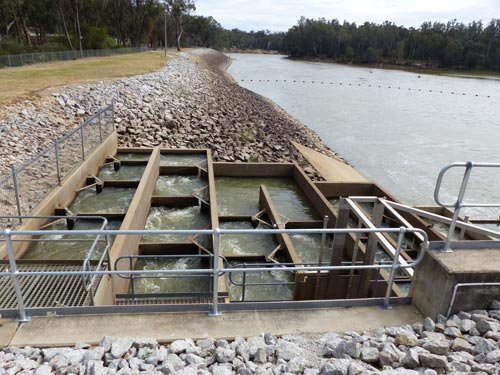
Findings:
The results of intensive (performance) monitoring at the new fishways included the following findings:
- Sampling at Lock 8 revealed that the fishway was successful in providing passage for fish 31mm to 1mm in length.
- Young-of-year Bony herring (Nematotose erebi), and the juvenile size classes of Un-specked hardyhead (Craterocephalus stercusmuscarum fulvus), Murray rainbowfish (Melanotaenia fluviatilis) and Australian smelt (Retropinna semoni) were unable to ascend.
- Another important discovery was that several species smaller than the minimum target design size (40 mm), such as Carp gudgeon (MHypseleotris spp), Murray rainbowfish and Unspecked hardyhead, previously thought not to be migratory, were, in their thousands, unsuccessfully attempting to move upstream through the fishways.
- Small-bodied fishes numerically dominated the total catch at the Lock 8 fishway and during spring and summer the bulk of these were juveniles and young of-year. This highlights a need for an additional fishway design criterion that includes seasonal changes in fish sizes and migratory biomass, rather than simply aiming to pass a minimum length criterion alone.
- At Lock 8 few non-native fish species were captured in the fishway, with the exception of adult Carp, which had an 87% success rate of negotiating the fishway.
- Although the new vertical slot fishways at Locks 7, 9 and 10 performed to design specifications, certain sizes of some species had trouble successfully using the fishways. In particular, many smaller Bony herring and Golden perch could not negotiate the fishways.
- At fishways constructed at the Barrages at the mouth of the Murray, over 98% of fish collected were small-bodied species which, while attempting to use the fishways were unable to ascend due to the design hydraulics, particularly at the vertical-slot fishways. Nevertheless, some small-bodied species were observed using the fishways during periods of low flow between the Lower Lakes and Coorong.
- Large-bodied estuarine species such as Black bream (Acanthopagrus butcheri), Mulloway (Argyrosomus japonicus) and various species of Mullet (Mugilidae) were noticeably absent from the fishways but present in the vicinity of the Barrages. A large-scale acoustic tracking program was initiated to determine fish passage success for these species.
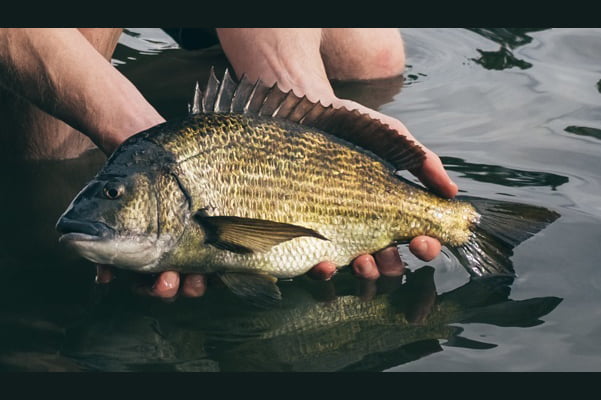
Longer term monitoring (at Locks 1-3) showed that:
- Catches were dominated mostly by small and medium bodied species during low flow conditions. Murray cod (Maccullochella peelii) were rarely encountered but the captured population was dominated by large individuals, suggesting limited recruitment opportunities for this species in the lower reaches of the River.
- Surveys consistently showed large downstream aggregations of fish, dominated by small-bodied native fish and Carp.
- Australian smelt, Bony herring, Flat-headed gudgeon (Philypnodon grandiceps), Unspecked hardyhead, Murray rainbow fish and Carp gudgeon remain common in the main channel of the lower River Murray.
- Differences were observed in the diel (daytime vs night-time) composition of the fish community. Some species and sizes were moving exclusively at night.
Key messages:
The attempted upstream movement of small-bodied threatened species such as Carp gudgeons was not known before the ‘Sea to Hume’ program, highlighting the need to identify the migratory community prior to fishway construction. The subsequent passage of Carp gudgeons through modified fishways will assist in restoring the ecological processes of dispersal and recolonisation for this species.
At the Barrages, fishway types identified as being suitable to facilitate small-bodied fish passage include small fish locks, low-head vertical-slot and rock-ramp fishways. To be effective and efficient at facilitating the passage of small-bodied fish over a long migration season (potentially August to March), these fishways will need to operate over a broad range of flow and headloss conditions. Securing environmental water allocations and delivering these in a manner that resembles natural seasonal cycles will potentially deliver the greatest ecological benefit.
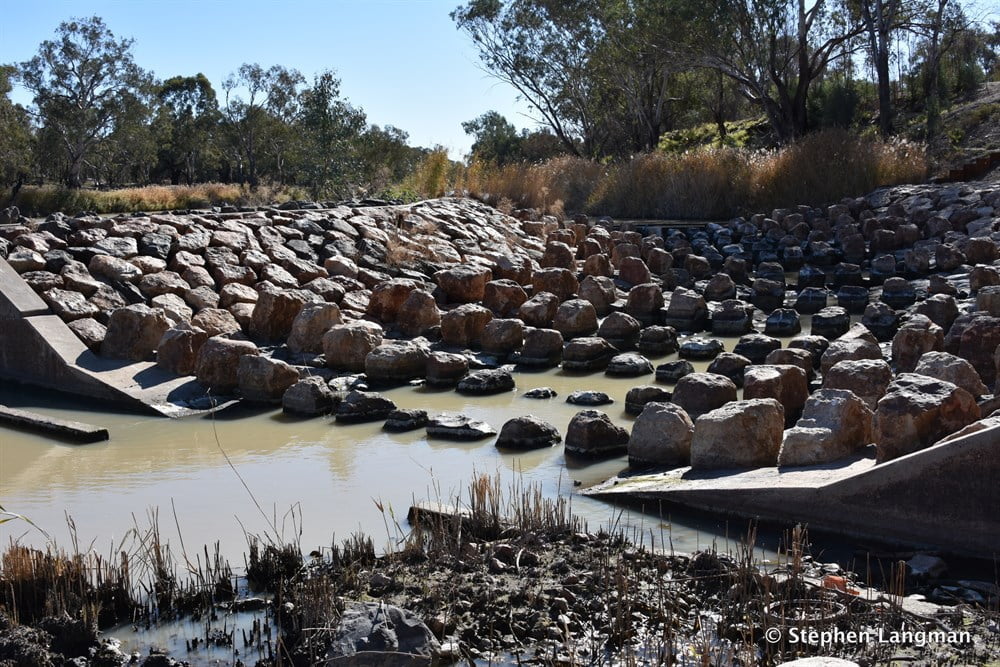
Observed changes in abundance of several species in the lower Murray River at night and in the day provides a useful insight for future fish passage studies: sampling both day and night samples are required to adequately describe the migratory community.
Remote passive integrated transponder (PIT) tag reader systems, which have been installed at most of the new fishways, continually monitor for any of the 30,000 fish PIT tagged in the Murray River.
Upon completion of the program a tagged fish can now be tracked up and down the river for its whole lifetime, providing important ecological data and also offering community stakeholders the opportunity to get involved in monitoring activities.
While many overseas fishways are designed to pass only select large-bodied economically important fish species, the Murray River fishways are able to restore passage for the majority of migratory species.

Restoring fish migration in over 2000 km of river is likely to have flow-on benefits. These will maximise the potential success of other management practices such as habitat restoration and threatened species protection for the rehabilitation of native fish populations in the Murray-Darling Basin.
This project was featured in RipRap – Habitat makes Fish Happen – Native fish finding a new way between the sea and Hume Dam
Full report here: Barrett, J. (2008) (ed.). The Sea to Hume Dam: Restoring fish passage in the Murray River. Murray-Darling Basin Commission, Canberra.
